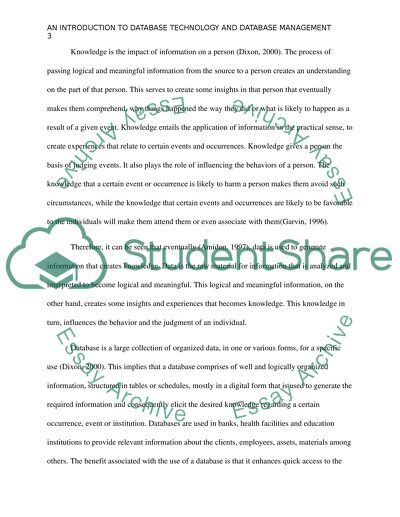An Introduction to Database Technology and Database Management Essay. Retrieved from https://studentshare.org/information-technology/1440464-data-database-and-database-management-systems
An Introduction to Database Technology and Database Management Essay. https://studentshare.org/information-technology/1440464-data-database-and-database-management-systems.


